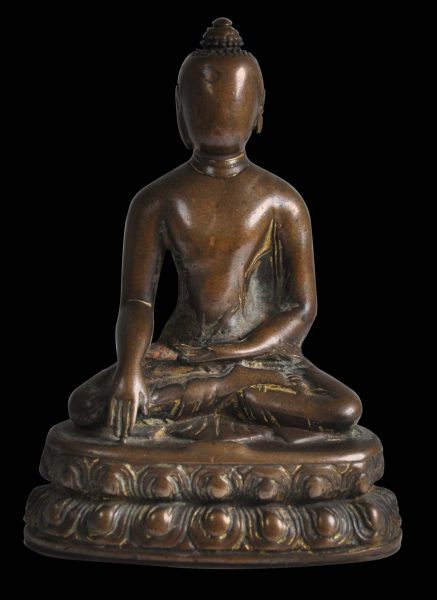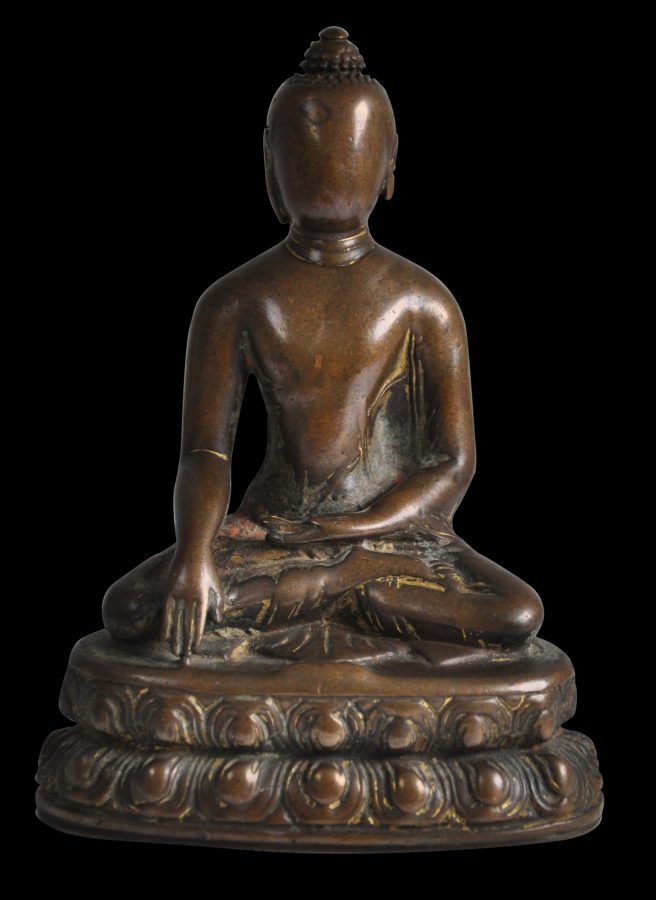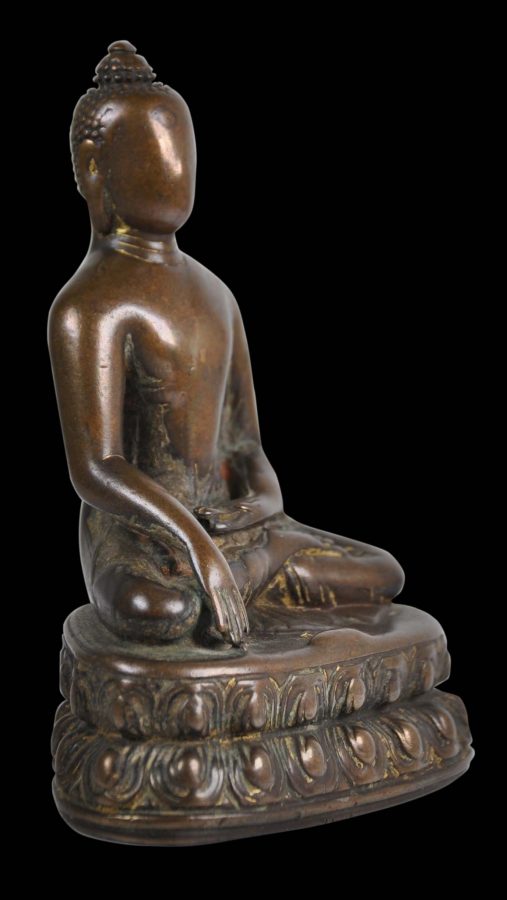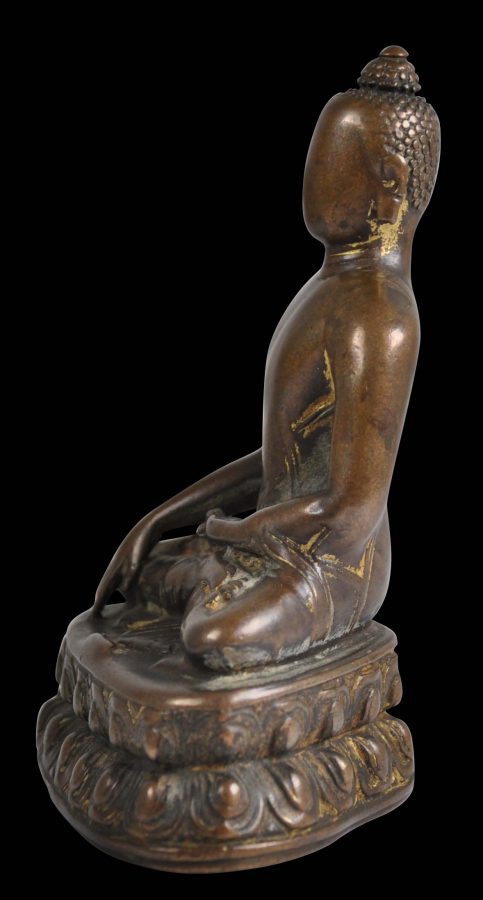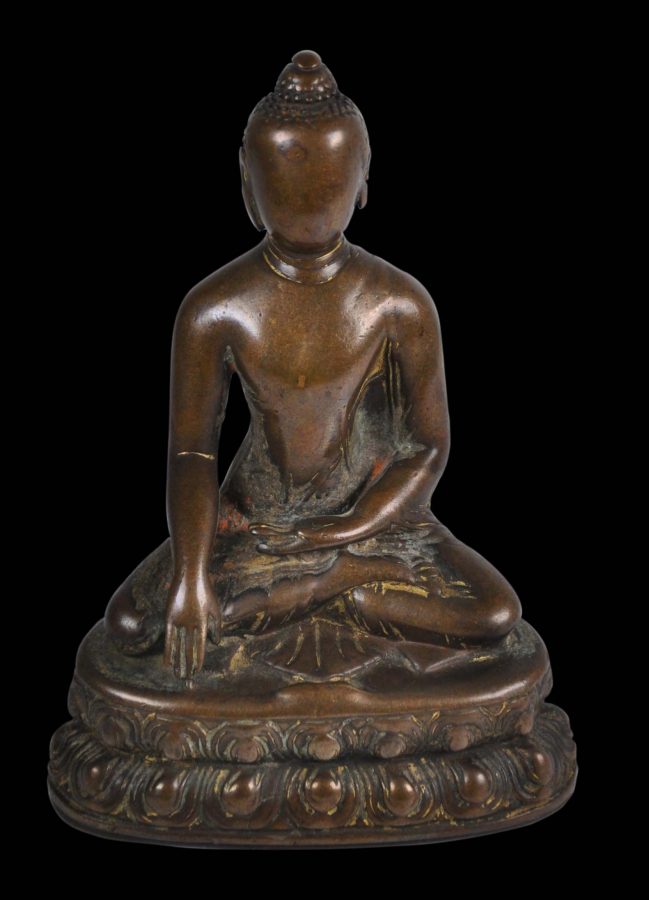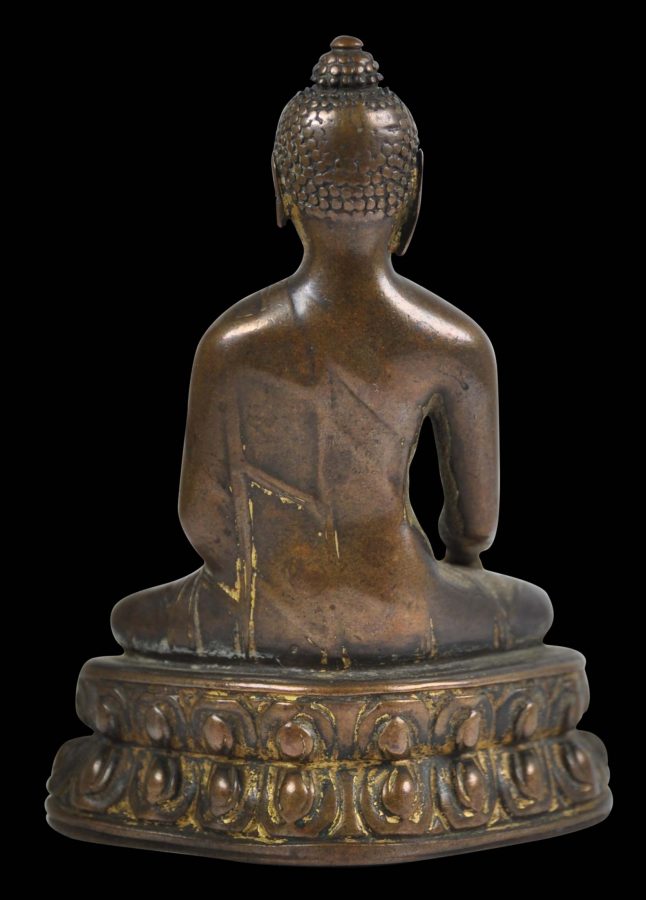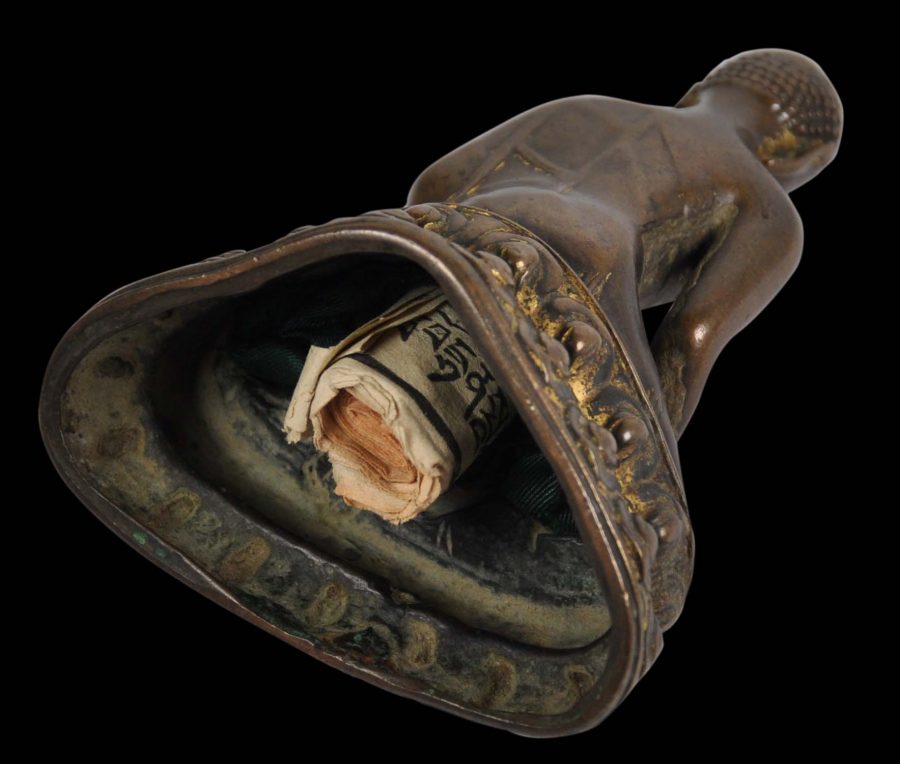This cast bronze Buddha image, with traces of gilding, is from Nalanada in northeastern India, and dates to the 12th century.
Nalanda was an ancient Mahavihara, or a large and important Buddhist monastery, in the ancient kingdom of Magadha (modern-day Bihar). It was an important centre of learning from the 5th to the 12th centuries, when it was destroyed by Muslim invaders.
The image is unusual because its face has been rubbed and caressed to the point where its features have been worn completely smooth. Such wear is not typical of Tibetan prayer usage (for example) or indeed even of Buddhist ritual wear. What it is typical of, however, is Hindu ritual wear. But this is consistent with the piece coming from the earlier stages of Buddhism (which grew out of Hinduism) in India.
The wear suggests it has been ritually lustrated, cleaned and rubbed, wearing away its features over many years.
The image itself show the Buddha seated in padmasana on a double-lotus throne, with hands in the bhumispara mudra (‘calling the earth to witness’) position.
The base is open and a rolled Tibetan prayer scroll has been inserted into the cavity but this is likely to be a recent addition.
Overall, this is a rare, unusual and early piece.
References
Pal. P., The Art of Tibet, The Asia Society, 1969.


